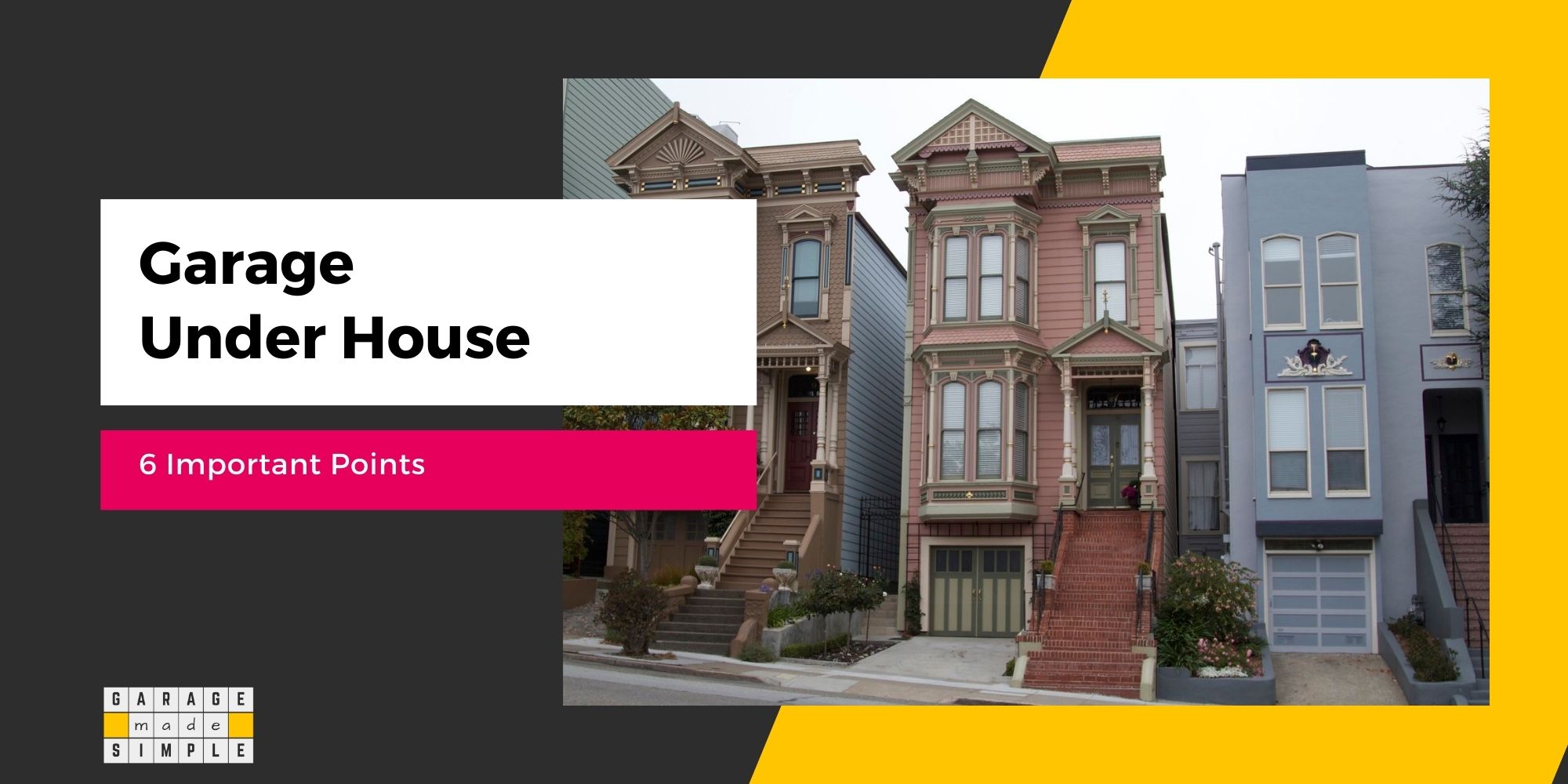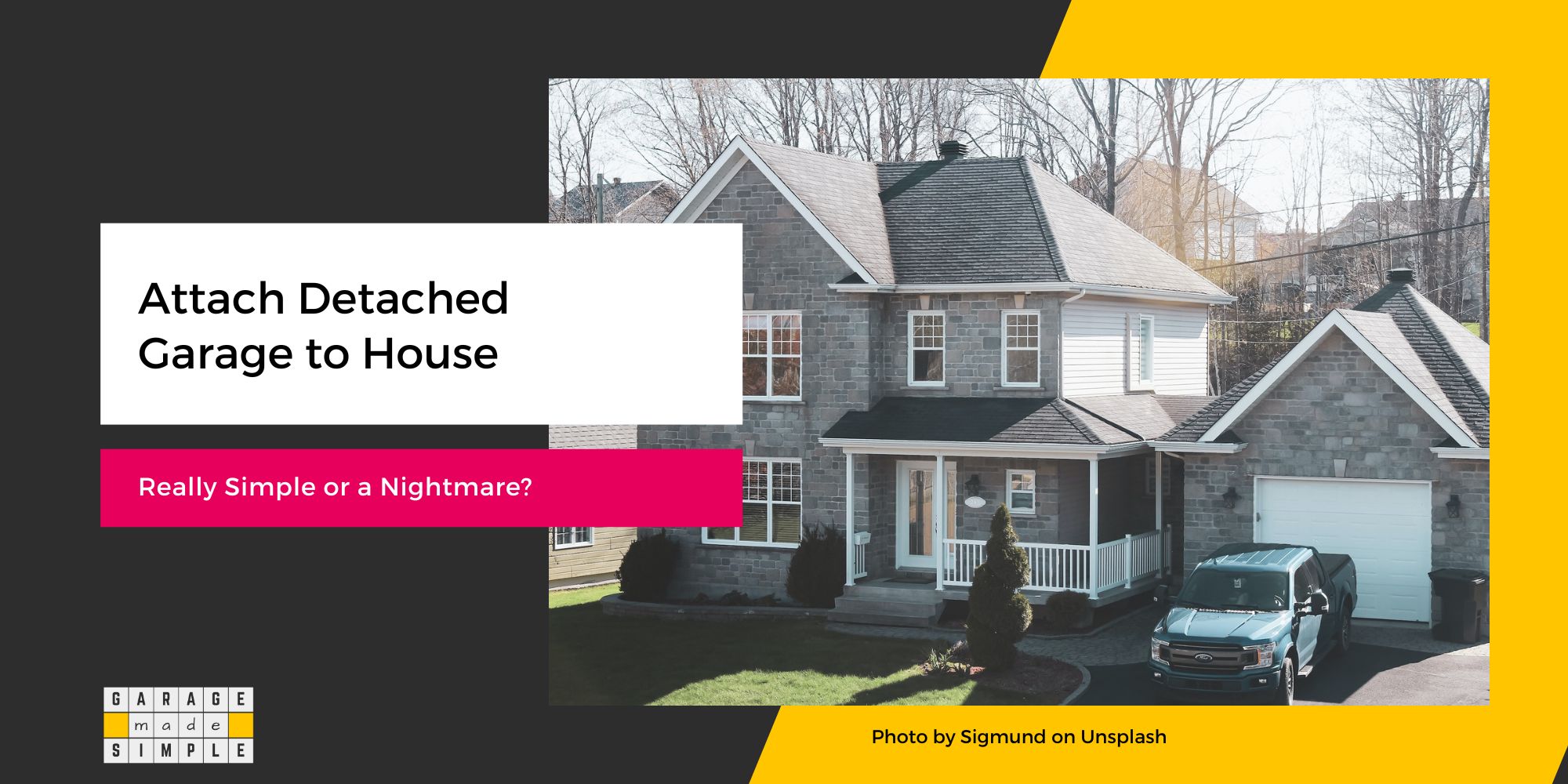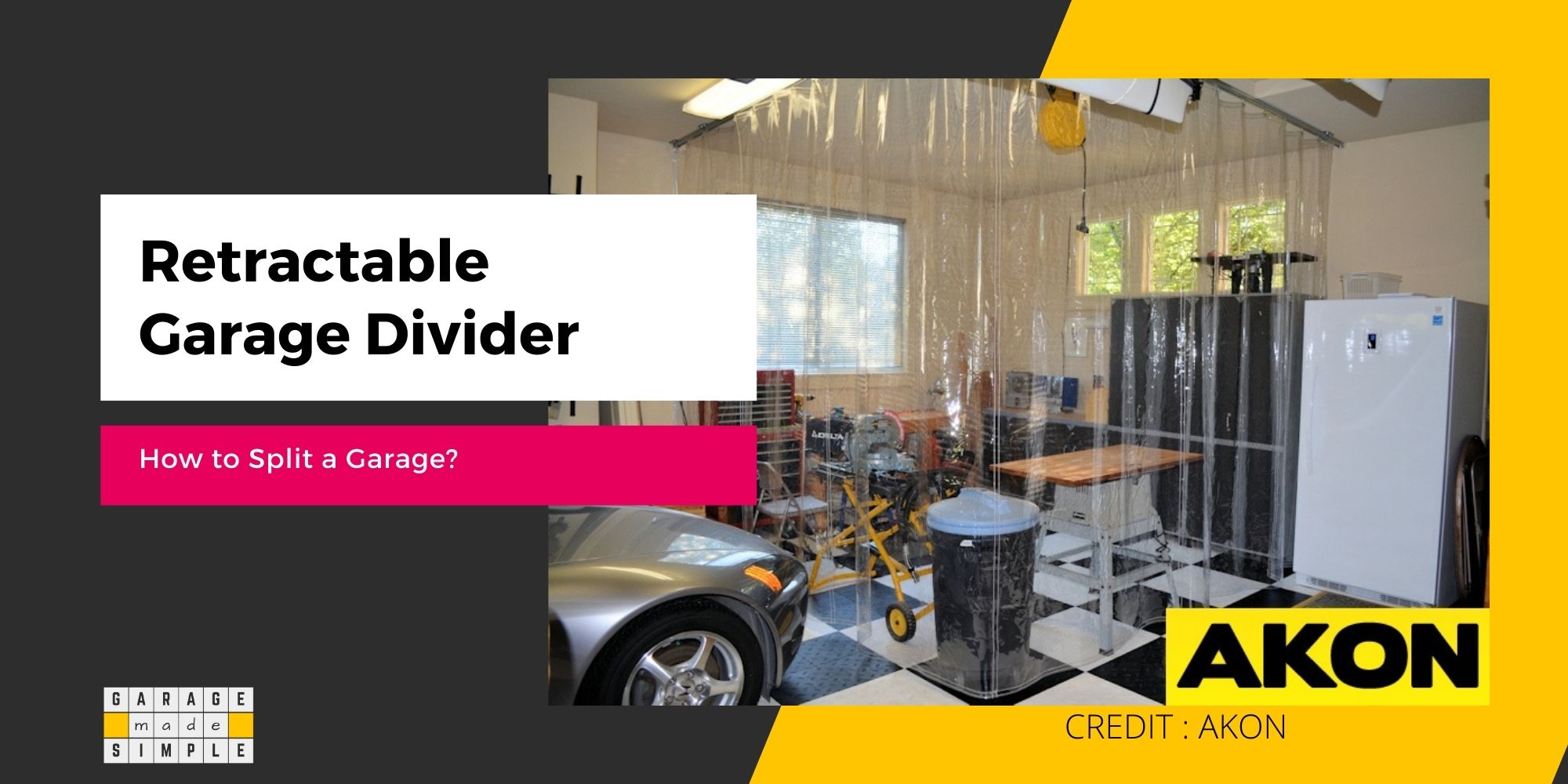The Best Way of Adding A Bathroom In Your Detached Garage (in 7 Steps!)
garagemadesimple.com is a participant in the Amazon Services LLC Associates Program, an affiliate advertising program designed to provide a means for sites to earn advertising fees by advertising and linking to Amazon.com . The website is also an affiliate of a few other brands.
How Hard is Adding a Bathroom in Your Detached Garage?
If you have a workshop or a gym in your garage, chances are you have felt the need for adding a bathroom in your detached garage. So can you do it? How hard is it?
Adding a bathroom in your detached garage is hard. It’s a lot of work, but it can be done.
Key Takeaways for Adding a Bathroom to a Detached Garage
- Adding a bathroom to garage is difficult but not impossible.
- Convenience, comfort and increased home value are some of the benefits.
- Do not start construction before obtaining a permit to build.
- Evaluate the garage’s plumbing and electrical requirements.
- Plan the garage bathroom to be small yet functional.
- Make sure to think ahead about ventilation, plumbing, and drainage. They can be challenging.
- Plan your bathroom in the garage corner to minimize work, materials and costs.
- The cost of the basic bathroom will be in the $3,000 to $6,000 range. But this can go up significantly if the detached garage is at some distance
So to put a bathroom in your detached garage, start by checking on the building code and getting the permit to build.
Arranging for the utilities, especially water supply & drainage will take effort, time and money.
Bathroom fixtures & fittings, wall framing, tiling, etc. are other important costs to include in your budget when adding a bathroom to a garage.
To be honest, it won’t be easy or cheap, but the rewards will be well worth it! Adding a bathroom to a garage will let you take a shower and get ready after working on your DIY project or working out in you garage gym,
All without the need to leave the garage and go back to the house.
Benefits of Adding a Bathroom to a Garage
Adding a bathroom to a garage can be a great way to improve the convenience, value, functionality, and comfort of your home.
- Increased convenience: A bathroom in the garage can be convenient for many reasons. For example, it can be used by people working in the garage, such as mechanics or hobbyists.
- Increased home value: Adding a bathroom to a garage can increase the value of your home by making it more attractive to potential buyers and makes it more livable for your family.
- Added functionality: A bathroom in the garage can add functionality to your home. For example, it can be used as a pool bathroom or a mudroom. It can also be used as a shower room for people who work outside or who have pets.
- Improved comfort: A bathroom in the garage can improve the comfort of your home. For example, it can also be used by guests who are staying in a guest house or apartment above the garage. Additionally, a bathroom in the garage can be used by family members who are using the garage for recreation, such as working out or engaging in hobbies.
In this post I show you, one step at a time, how to put a functional bathroom in your detached garage. So, let’s get started.
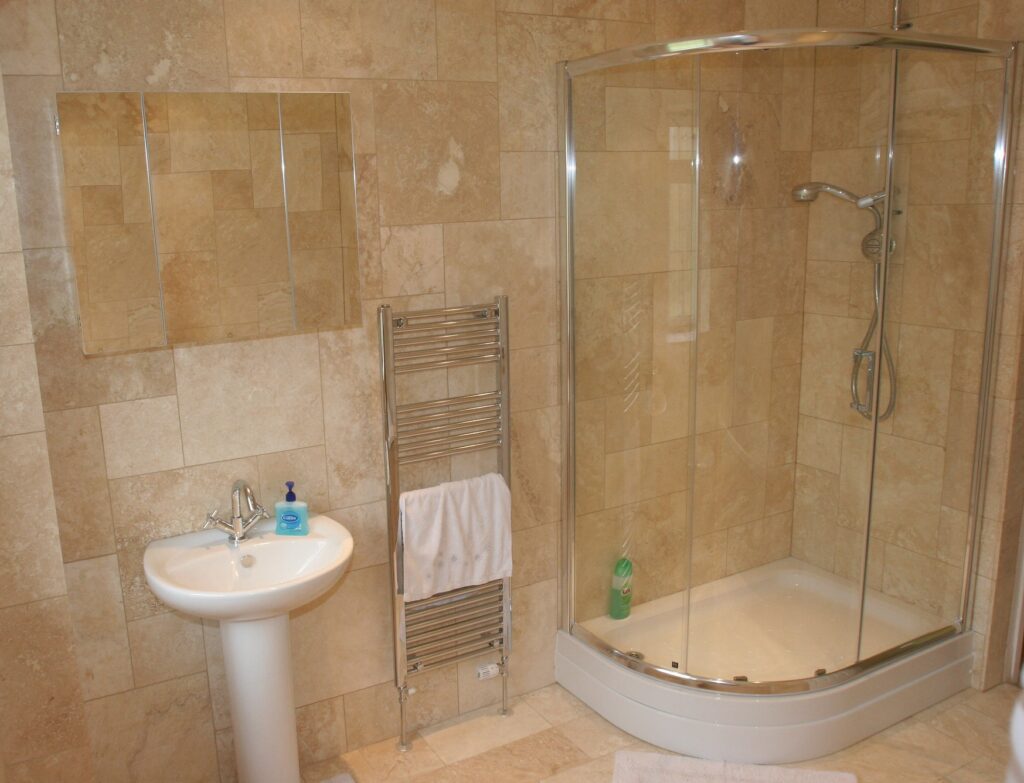
STEP 1: Obtaining Permit for Adding a Bathroom in Your Detached Garage
You almost always need a permit to build anything new or even to make any significant modifications to an existing building. Will adding a bathroom in your detached garage require a permit?
Most likely yes. Adding a bathroom to a garage involves a lot of construction work and that usually requires a permit to build. Anyway, you need to check and get the answer from the local approving authorities.
Obtaining the “permit to build” is a crucial step.
- Permits ensure that your project complies with local laws and codes.
- Permits protect you and your property from potential fines or legal actions.
- Lack of proper permits can affect the sale of your property in the future.
Hopefully you will be able to access information and make the permit application online.
Your contractor may also be able to help out by filling the forms correctly. They can provide all the required information and drawings.
STEP 2: Evaluate the Garage’s Plumbing & Electrical Requirements
Evaluating the garage’s plumbing and electrical requirements before starting a bathroom renovation is important to avoid delays and unplanned costs during the project. It also helps to ensure that the new bathroom is properly installed and meets all applicable codes and regulations.
Garage Plumbing Requirements
Evaluating the plumbing requirements involves:
- Assessing the distance from the main water and sewer lines.
- Determining the condition and capacity of the existing plumbing systems.
- Ensuring that the existing pipes are in good condition and of the appropriate size to handle the additional water pressure usage from the new bathroom.
- Determining if the existing sewer line can handle the additional waste from the new bathroom.
If the existing plumbing system is inadequate, it may need to be replaced or upgraded. It is also important to consider whether a septic system is required.
Garage Electrical Requirements
Evaluating the garage’s electrical requirements involves:
- Determining if the existing electrical system can handle the additional power usage from the new bathroom.
- Ensuring that there is enough amperage and voltage to support the added electrical loads such as lighting, ventilation, and appliances.
If the existing electrical system is inadequate, it may need to be upgraded or new circuits may need to be added.
STEP 3: Plan the Garage Bathroom to be Small Yet Functional
It is best to keep the bathroom in your detached garage small & functional. In my opinion you can get a decent bathroom in a 4’X8’ corner of your garage (see layout below).
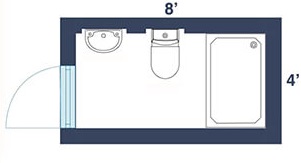
You just need to have the three basic fixtures, sink, toilet & shower.
Sink
Go for a simple rectangular shape and adapt it to the available space and your specific needs.
Recommended Product: KOHLER Verticyl 17″ Rectangular Undermount Bathroom Sink
Toilet
Choose a toilet that uses a small floor area but is highly efficient when it comes to the amount of water used per flush. Ease of installation is another feature to look for.
Recommended Product: KOHLER Corbelle Comfort Height(R) Toilet
Shower
Go for a shower enclosure kit that is designed for a corner installation. It is an effective solution to maximize space.
The shower base should be scratch, slip, and stain resistant. The sliding doors should be acrylic or tempered glass for easy maintenance.
Recommended Product: DreamLine French Corner Sliding Shower Enclosure
Hot Water for the Shower
Nothing like a hot shower after a workout. The best option is to use an Electric Tankless Water Heater.
Recommended Product: EcoSmart ECO 18 Electric Tankless Water Heater
STEP 4: Considerations for Ventilation, Plumbing, and Drainage
When designing a bathroom renovation, it is important to consider the following aspects of ventilation, plumbing, and drainage:
Ventilation
Proper ventilation is essential to prevent moisture and mold buildup and ensure that the bathroom is comfortable and safe. This can be achieved through a variety of methods, such as installing exhaust fans, windows, and vents.
Plumbing
The bathroom must have proper hot water supply lines and a drainage system. This includes ensuring that the plumbing is connected to the main water and sewer lines and that the fixtures and appliances are properly vented.
It is also important to consider the type of fixtures and appliances used in the bathroom and to ensure that they are properly connected to the plumbing system.
Drainage
Proper drainage is important. Wastewater must be properly disposed of. For this, you must ensure drainage pipes are correctly connected to the main sewer line or septic system.
Traditional septic tanks are the most common type of septic system and are the most affordable option. However, they require regular maintenance and pump-outs.
Aerobic treatment units (ATUs) are more efficient than traditional septic tanks and require less maintenance, but they are more expensive.
Advanced treatment systems (ATS) are the most efficient and environmentally friendly option, but also the most expensive.
STEP 5: Installation of Plumbing in the New Garage Bathroom
Plumbing, which includes water supply and drainage, is going to be the most challenging job when adding a bathroom to a garage.
Plumbing to a detached garage will mean a lot more work than plumbing to an attached garage. The further the distance from the house, the more difficult it gets.
Plumbing for adding a bathroom to a garage requires piping for water supply and drainage that can take the waste water to the sewage system or septic tank.
You could do it yourself or engage the services of a professional plumber.
Water Supply
When you put a bathroom in your detached garage, you will need to run an underground water supply line from the house to the garage. Figure out what will be the shortest connection.
The easiest option might be a water point outside the house that you use for watering the yard.
Else you can try to tap a water pipe in the basement, kitchen or a bathroom in the house.
The water pipe has to be buried in the ground at a level below the frost line in your area to avoid freezing in winter.
A trench would need to be dug through your yard and possibly across the driveway as well. If the frost line is not applicable to your area, just keep the drain 12”-18” deep.
On the garage side, the pipe must enter through the garage foundation and then emerge from the concrete garage slab.
TIP: You can use a PVC pipe but PEX is a lot better as it is flexible and easy to work with.
Drainage
The wastewater from the bathroom in the detached garage has to be directed towards the sewage drain or the septic tank, as the case may be.
Keep the drain pipe straight. No bends. Also keep it inclined, sloping down at around 1″ for every 4′ towards the main sewer line.
This will ensure that toilet paper, solid organic waste and water are all moving at the same speed towards the city sewer line. Less likelihood of the drainage blocking.
Can a Shower and Toilet Share the Same Drain?
Yes, the sink, shower and toilet can all share the same drain as that drain must ultimately lead to the city sewage drain system. However, they must be connected in a specific order.
Keep in mind some basics of drainage plumbing for a bathroom in your detached garage:
- The pipe running from the bathroom to the city sewer line should be 4”.
- The toilet gets connected to this first using a Y joint and a 3” pipe.
- Next comes the shower drain connection using a Y joint and a 2” pipe. For the shower you need to have a P-trap also.
- Last item to be connected is the sink. You use a 2” or a 1 ½” pipe for that and another P-trap.
- This is where the vent pipe, which goes straight up to the roof, is also attached.
- The vent pipe allows air to flow in to fill up the vacuum created whenever water or solid matter is flushed out through the drain.
Since you are doing so much plumbing, you might also want to install a utility sink. Check out my blog post Practical Tips For When You Need A Garage Utility Sink.
Since your bathroom will be in the garage corner you will need to build just two walls and do up the flooring in the bathroom area.
STEP 6: Building the Garage Bathroom Enclosure
Plan your garage bathroom to be in one corner so that you need to build just two walls and do up the flooring in the bathroom area.
You will need to build two partition walls, floor to ceiling. The shorter wall will have a door that opens outwards, to maximize the usable area of your small bathroom.
You start off by making the frame. The frame will have a sole plate (to be secured to the concrete floor) and a top plate (to be attached to the ceiling or a beam).
The frame is completed with vertical studs, 16 inches apart and then tilted up and secured to the floor, the ceiling beam and the wall column.
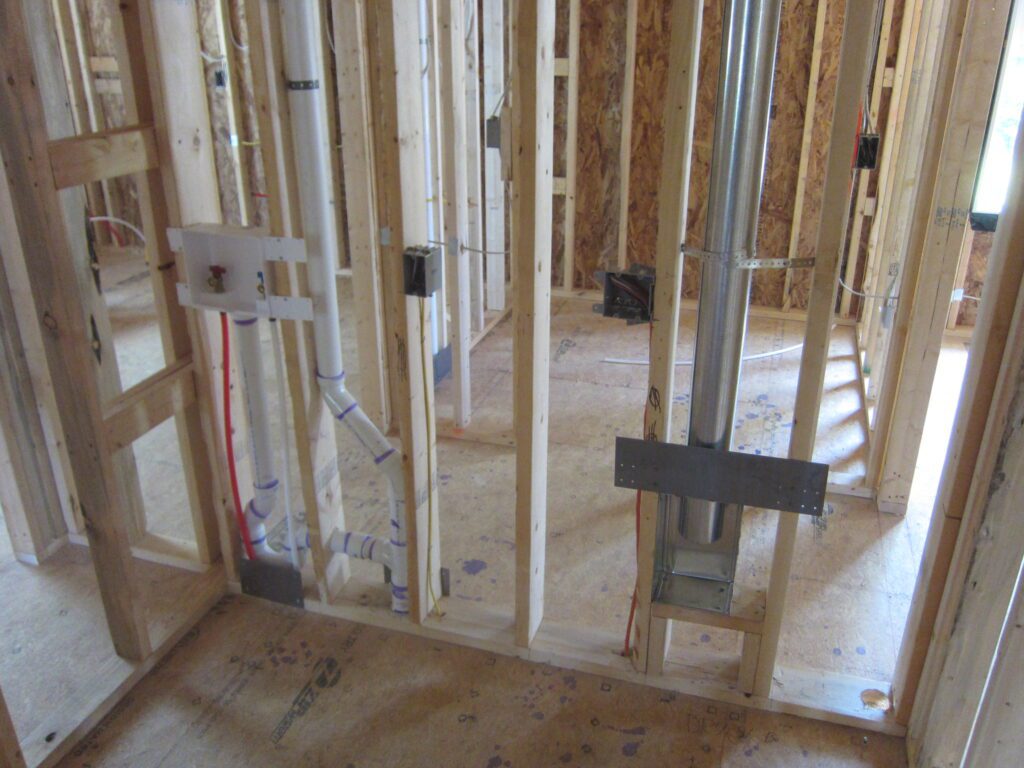
STEP 7: Finishing the Bathroom
After installing the fixtures in your garage bathroom, you can finish the bathroom by adding flooring, paint, and other finishing touches.
Flooring
Install ceramic or porcelain tiles. They are the best for areas where there can be water spills; bathrooms, kitchen & laundry room.
Painting
Now all you need to do is to paint the remaining walls and the ceiling. Color is always a very personal choice. I suggest using a deep color if your garage interior is white or has a pastel tone.
Rust-Oleum Painters Touch Gloss or Semi-Gloss available at Amazon (water-based acrylic formula, low odor, resists chips and provides long-lasting protection) is a great choice.
Rust-Oleum Painters Touch Ultra Cover
Rust-Oleum Painters Touch Ultra Cover
Rust-Oleum Painter’s Touch Ultra Cover Multi-Purpose Brush-On Paint provides a smooth, durable finish that lasts longer than ordinary paints. Apply to wood, metal, plaster, masonry or unglazed ceramic. Durable formula resists chipping and fading.
Personalization
Add the final touches to your bathroom by installing accessories such as towel racks, mirrors, and lighting fixtures. You can also incorporate artwork, decorative items, and textiles to personalize the space and make it feel more inviting.
What is the Cost of Adding a Bathroom to a Garage?
The cost of adding a bathroom to your detached garage will depend on factors
- Distance between House and Garage
- Size of the Bathroom
- Quality of Materials Used
The cost of the basic bathroom will be in the $3,000 to $6,000 range. However, the cost of plumbing could add significantly to the cost if the garage is more than 10-20 feet away.
There are just too many factors involved and only a local plumber will be able to give you an estimate after visiting the site and taking measurements.
FAQ
Do Bathrooms in Detached Garage Need Ventilation?
Every bathroom, whether it is in your house or in a detached garage, needs ventilation. High humidity and obnoxious odors go hand in hand with bathrooms.
Improper or inadequate bathroom ventilation will make your garage stink to high heaven. The high humidity will also result in damages to your car and other equipment & sporting goods stored in the garage.
How Do You Keep Pipes from Freezing in an Unheated Garage?
To prevent damage due to freezing of water pipes in an unheated garage use a combination of following techniques:
1) Use PEX piping; they expand when water freezes without bursting
Insulate water lines
2) Drain & shut off water lines
3) Keep the faucet dripping; flowing water reduces risk of freezing
What is the Code for Space Around the Toilet?
The National Kitchen & Bathroom Association (NKBA) recommends space requirements for the various items in a bathroom. Your local building authorities may have slightly different specifications. So you must check with them and ensure you comply with the local code.
NKBA recommends
Sink
Minimum of 30”X48” in front
Toilet
Minimum 24” in front. Minimum 15” from center of toilet to side walls. Minimum 30” center to center from any other sanitary fixture.
Shower
Shower area should be a minimum of 32”X32”. The total shower area for non-square showers, should not be less than 1,024 square inches. Minimum 24” clearance in front of shower entry.
Thank you very much for reading the post. I do hope you found it informative and useful.




